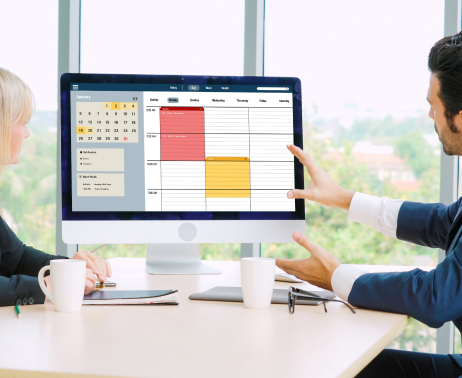
Customers or clients are the key factors of any business' success story. A flawless customer onboarding process is essential for making the most out of all sales opportunities. We all know that every customer wishes for a personalized experience, and you should keep your word regarding that. Hence, developing an adequate onboarding strategy is essential. Here, we will shed light on hybrid onboarding methods for remote teams, how to build a customer onboarding framework, different types of customer onboarding and benefits, etc.
What is Customer Onboarding?
A customer onboarding model is an approach your company employs to help customers understand and engage with your product or service after purchasing. Let's explain hybrid onboarding methods for remote team and how to build a customer onboarding framework. Hybrid onboarding involves transitioning new hires in hybrid roles into the company, addressing unique challenges presented by hybrid employees who work both remotely and onsite. Using a customer onboarding framework can provide many benefits. It helps customers realize value quickly, reduces obstacles, lowers support costs, and increases customer loyalty. Identify the key features that add value to create a successful onboarding strategy. Then, choose whether a high-touch or low-touch approach is best for your business. Set important milestones and develop a practical playbook to achieve them. And remember to continually evaluate, modify, and adapt your onboarding strategy as needed. High-touch, Low-touch, and Tech-touch are the three models of customer onboarding you can employ. Let's discuss each in detail.
High-touch Model
The high-touch customer onboarding model is based on the human-centric approach, which provides the customers with personalized digital engagements for their entire journey. The high-touch model is implemented through in-person meetings, phone calls, demos, 1-1 webinars, etc. Customers get personalized and immediate assistance from dedicated Customer Success Managers (CSMs) for handling their queries and problems.
Benefits
You will be able to inform your customers about all the product and service updates and provide them with the essential training.
You can make sure that your customers or clients know your service or products and assist them in achieving their goals.
You can receive instant feedback regarding your product or service and the onboarding experience from your customers during the training.
Low-touch Model
A low-touch onboarding strategy is implemented to ensure minimal involvement from the onboarding team. Customers are equipped with self-explanatory resources to facilitate the set-up process of the product independently. These resources comprise webinars, emails, how-to guides, FAQs, and troubleshooting documentation. Assistance is extended through follow-up support channels such as email, phone, and chat, but individual interactions are not encouraged.
Benefits
Lesser one-to-one approach with clients means that your team can save valuable time for other activities.
Your customers will be able to comprehend and use your product or service rapidly.
Clients or customers can determine how they learn your service or product, hence deducting the amount of friction.
Tech-touch Model
The tech-touch onboarding model has a self-serving nature, which enables the users to log in or sign up and understand your services or products and their value by trying them. In other words, the tech-touch onboarding model refers to the employment of technology for onboarding customers with the help of features explaining pop-ups and series of automated emails, newsletters, blogs, video tutorials, etc., that provide the know-how.
Benefits
You can understand the obstacles in the journey of your customers to the "aha moment." (The point in the customer's journey in which they experience the value of your product or service firsthand.)
Enables your clients or customers to reach their goals more quickly and realize the value of your service or product.
Helps in reducing investment of time and cost into low Life-Time Value (LTV) customers.
How to Choose an Onboarding Model?
Many of the most successful companies in the world have found that a combination of High-touch, Low-touch, and Tech-touch approaches to customer service is the key to delivering an exceptional customer experience. When it comes to choosing an onboarding model for new customers, there are four crucial factors that must be considered; such as,
The complexity of your service or product
Type of company you are doing business with – mid-market, SMB, enterprise, etc.
Customer LTV or deal value
Your business growth stage
It would be best if you also analyzed other things regarding your clients or customers, like their issues, what solutions they are looking for, what are their actual goals, the risk they are facing, and their level of comprehension of your or your competitor's products, their experience and so on.
Let's Conclude
To make your clients happy, you need to customize your onboarding process based on certain factors, some of which are mentioned above. If your business is new, it's best to have a high-touch onboarding process to learn about your customers' needs and get feedback on areas that need improvement. By observing your customers' behavior and getting their feedback, you can create a personalized onboarding process that meets their unique needs and preferences. Make your choice of customer onboarding model wisely after understanding each model and how they can benefit your business.






